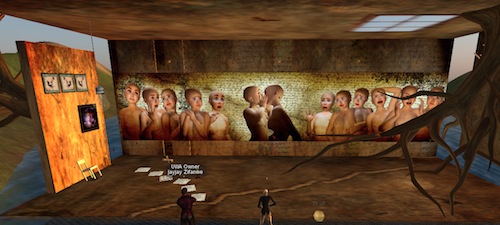 Here’s a true story: Like a lot of players, I have a Level 2 character in World of Warcraft that exists purely as a banking / auction house conduit (bank alt). I have another character that is leveling one of their professions and they needed a particular item sold for a measly one silver, 18 copper from one of the vendors right across from the auction house where my bank alt hangs out. 42 virtual steps in fact (yes I counted). It occurred to me to check the auction house to see if anyone was entrepreneurial enough to be selling that same item on the auction house for a mark-up. Sure enough, someone was, at 200 times its cost if bought from the vendor (around 2 gold). Not to be outdone, since that time I’ve sold a couple of the items each day for the same 20,000% markup. I’ve also started selling other items from the vendor at 1000-2000% markups.
Here’s a true story: Like a lot of players, I have a Level 2 character in World of Warcraft that exists purely as a banking / auction house conduit (bank alt). I have another character that is leveling one of their professions and they needed a particular item sold for a measly one silver, 18 copper from one of the vendors right across from the auction house where my bank alt hangs out. 42 virtual steps in fact (yes I counted). It occurred to me to check the auction house to see if anyone was entrepreneurial enough to be selling that same item on the auction house for a mark-up. Sure enough, someone was, at 200 times its cost if bought from the vendor (around 2 gold). Not to be outdone, since that time I’ve sold a couple of the items each day for the same 20,000% markup. I’ve also started selling other items from the vendor at 1000-2000% markups.
For the regular MMO player, this is nothing new, and there’s screeds of research and opinion on MMO economies and player behaviour. I just hadn’t realised how endemic the issue of laziness is. Laziness is probably too negative a term in some respects, as for some people it’s probably just time efficient to buy everything from the auction house. If you’ve got 20,000 gold sitting in your bag and the item is 2 gold, then even at a huge markup it’s a no-brainer compared to trying to remember which vendor has it, let alone the time spent getting to them. It’s a simple example of the concept of opportunity cost (here’s one gamers perspective on it).
This issue has some obvious applicability to virtual worlds more broadly. In Second Life, I will quite often just go browsing at clothing stores that I’ve landmarked rather than try to find something new via the search function – few will argue that the Second Life viewer’s search function is a time sink. Social virtual worlds from Habbo to Frontierville have this concept down pat, making it as easy as possible to provide variety without excessive time expense. It’s a lesson that the more mature worlds are absorbing – it’s the speed of learning that will determine who succeeds and who doesn’t. At this stage, platforms like Second Life, Twinity and Blue Mars are walking the fine line between innovation and an opportunity cost too big for a critical mass of people to bear.
Over to you: what aspects of virtual worlds do you avoid because the time / expense isn’t worth it for you?





Recent Comments